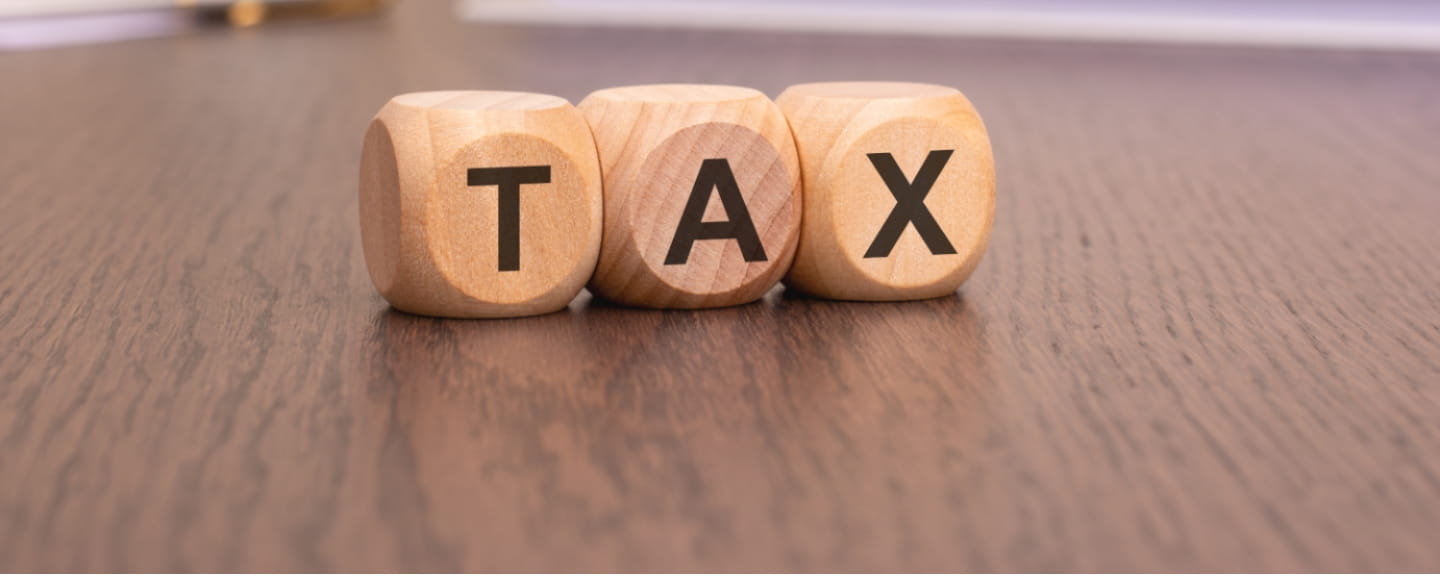
This article is for general guidance only and is not financial or professional advice. Any links are for your own information, and do not constitute any form of recommendation by Saga. You should not solely rely on this information to make any decisions, and consider seeking independent professional advice. All figures and information in this article are correct at the time of publishing, but laws, entitlements, tax treatments and allowances may change in the future.
When planning your finances, it’s hard to stay on top of everything you should be doing to make the most of your money - whether that’s putting your savings in the place they'll make the most interest or working out how your financial situation is going to look in the future.
It can all feel a bit overwhelming, making it easy to just decide you’re probably doing enough and move on with your day.
However, there are several ‘use it or lose it’ annual tax allowances and exemptions that you should be aware of - making sure you’re on top of them can save a substantial amount over the years, meaning it’s worth spending a few minutes learning about how they work.
All the examples listed here are correct at the time of writing but could be subject to change in the upcoming Budget on 30 October.
Media reports suggest many people have been rushing to take advantage of tax breaks amid fears they could be reined in. However, it’s important to take a measured approach to your tax planning, rather than make knee-jerk decisions based on speculation.
Most people have a Personal Allowance – £12,570 in the 2024/25 tax year – which is the income they can enjoy without paying Income Tax.
Retirement income often comes from a range of places – things such as the State Pension, private pensions, rental income, or earnings (if still working in some capacity) are all potentially taxable and will count towards your Personal Allowance.
Once you receive more than £12,570 from any (or all) of these sources, they’ll be liable for Income Tax.
It’s a bit more complicated with money received from savings and investments. Basic and higher rate taxpayers can still enjoy some tax-free interest from cash savings, even if they’ve earned more than the Personal Allowance.
This it called the Personal Savings Allowance, where someone can earn £1,000 in interest if they’re a basic rate taxpayer, or £500 for those on the higher rate.
You can also get up to £5,000 of interest and not have to pay tax on it in certain situations, using the starting rate for savings, if your income is less than the Personal Allowance.
After these any other income may well be taxable, unless it’s held in an ISA.
Now, you might not associate ISAs with retirement planning, but they can play a very helpful role in reducing your tax bills - because any income you receive from them will be tax free.
Let’s take the simplified example of someone over State Pension age who’d like an income of £20,000 a year. If they took all their money from pensions, after their Personal Allowance has been deducted (£12,570), they’d pay basic rate tax on £7,430 a year, which would work out at £1,486.
However, if they were to take £15,000 out of their pensions and £5,000 from ISAs, they’ll still be getting an overall income of £20,000 but they’ll only be paying tax on £2,430 of income, giving them a tax bill of just £486.
If in a couple, it may make sense to use money out of each pension, rather than relying on one, so each person takes advantage of their Personal Allowance.
Of course, managing multiple sources of income tax-effectively can be complicated and it can often be helpful to get advice from a financial planner if you’re worried about how it works - there is a cost, but they can help explain the most effective way to handle your money.
If you’re married or in a civil partnership, there’s another thing you could consider that helps reduce the tax you need to pay. The Marriage Allowance lets you transfer £1,260 of your Personal Allowance to your spouse or civil partner, cutting their tax bill by up to £252 a year.
This works by reducing the Personal Allowance of one in the couple down to £11,310, allowing the other person to earn up to £13,830 before they need to start paying Income Tax.
However, to qualify the person transferring their allowance must be a non-taxpayer, receiving less than the Personal Allowance, while the other must be paying Income Tax at the basic rate.
(If you’re a Scottish taxpayer this is the starter, basic or intermediate rate.)
This is worth considering if one of you doesn’t use all their Personal Allowance. Rosie Hooper, Chartered Financial Planner at wealth management firm Quilter Cheviot, says this could be the case for people in or approaching retirement.
“Income levels could vary, perhaps due to different pension provision or one of you stopping working,” she says. “If this happens, it’s easy to apply.”
However, Tom Henderson, Technical Officer at the Low Incomes Tax Reform Group, told Saga Money News in another article that couples won’t always benefit.
“If you have variable incomes, or your incomes are around the Personal Allowance [amount], do your sums to check it’s worth claiming,” he explains.
What is the Marriage Allowance and how can I claim it?
You can save up to £20,000 a year in ISAs and, as we’ve already covered, you won’t pay tax on any interest on money held in these kinds of accounts.
But any investments held in ISAs also won’t be liable for tax – such as Capital Gains Tax or tax on dividends, so it pays to be smart on how you use these.
One method investors can use is a process known as ‘bed and ISA’. Now, this involves transferring assets (such as funds or shares) held outside of a tax wrapper into an ISA, so that any investment growth and income that appear later are sheltered from tax.
However, there may be charges and if the sale means the investor exceeds their Capital Gains Tax allowance for the year (currently £3,000) it could trigger a tax bill.
You might also want to contribute to a Junior ISA to boost a child or grandchild’s savings. These accounts need to be opened by a parent or guardian with parental responsibility, but they’re a great option for grandparents who don’t want their grandchildren to raid it straightaway.
There’s an annual savings limit of £9,000 for a Junior ISA and, although they won’t be able to access the money until they’re 18, these ISA types could be a handy pot for university, a first car or a mortgage deposit.
How you could make your grandchild a millionaire
Even if you’ve already retired, you might want to keep paying into your pension. “The tax relief on offer from pensions doesn’t end when you stop work,” says Ed Monk, Associate Director at investment management firm Fidelity International.
“You can continue to pay into a [defined contribution] pension until age 75 and potentially benefit from tax relief. This turns an £80 contribution into £100 inside your pension.”
However, how much you can pay into your pension after retirement depends on a few things.
If you’re still earning and haven’t started taking taxable income from your pension, you can pay in up to 100% of your earnings, to a limit of £60,000.
Alternatively, if you’re still working but have already started taking money from your pension, the maximum you may be able to pay in is £10,000, known as the Money Purchase Annual Allowance (MPAA).
If you aren’t working - or are on a low income - you can still pay in £2,880 per year, which will be worth £3,600 once tax relief has been applied.
As well as using your annual allowance to benefit from this tax relief, Monk says there are further tax benefits to consider.
“[Currently], up to 25% of the money you pay into a pension can usually be paid to you tax-free, with the rest taxed as income,” he adds. “Your [defined contribution] pension is also outside of your estate for Inheritance Tax purposes.”

Capital Gains Tax (CGT) can take some of the pleasure out of making a profit on your investments.
It’s currently charged at a rate of 10% for basic rate taxpayers or 20% if you fall into the higher tax rate on assets including investments (rising to 18% and 24% on residential property that’s not your main home).
To reduce the pain of a chunky tax bill, Jason Hollands, Managing Director at financial services company Evelyn Partners, suggests considering using your annual £3,000 CGT tax-free allowance if you can. “If the investment case makes sense, you could sell assets to use up the allowance,” he explains.
“A married couple or civil partners could also transfer the assets between themselves CGT-free to take advantage of both of their allowances.”
If you’re thinking of renting out a room (or rooms) in your home, perhaps because the kids have flown the nest, you can take advantage of the Rent a Room Scheme. This lets you earn up to £7,500 a year tax-free if you let furnished accommodation in your home.
It’s available for any type of residential letting, whether that’s a long-term lodger, an Airbnb guest or a bed and breakfast – but not if you rent out a room as an office or for other business purposes such as storage.
It’s simple to claim. If you earn less than £7,500 from renting a room, you don’t need to do anything, although it’s prudent to keep records of the income you do receive.
Earn more than £7,500, and you’ll need to complete a tax return, either claiming the relief or opting for it to be treated as a rental business, with expenses deducted from rental income.
The growth of digital platforms, such as Airbnb, eBay and Etsy, has made it easy to make some extra cash.
“It’s never been easier to start a side hustle,” says Chris Etherington, Tax Partner at audit, tax and consulting services RSM. “I’ve even seen platforms where you can make money hiring out your power tools.”
Adding to the appeal are the annual tax-free allowances. These let you earn up to £1,000 from property and a further £1,000 from trading without paying a penny in Income Tax.
You should keep records of the income you receive but you won’t need to declare it to HMRC.
Become more successful with your side hustle, and you can choose to continue using the tax-free allowance - or register with HMRC to deduct expenses against the money you make, potentially making the venture more lucrative depending on your situation.
Inheritance Tax (IHT) planning also offers up a variety of allowances that you can take advantage of every year to reduce a future IHT bill.
These include a £3,000 annual exemption, as many gifts of up to £250 per person as you like and up to £5,000 worth of gifts for weddings and civil partnerships, depending on who you’re giving the money to.
Although the amounts are limited, Hollands says these allowances are still useful. “Over time, you can chip away at the size of your estate while also helping out younger relatives financially,” he explains.
There’s also the potential to gift larger amounts through the ‘normal expenditure out of income’ exemption.
If it’s a regular gift, it’s from your income (so not taken from savings or other capital) and you can prove that it doesn’t affect your standard of living, you can give as much as you like, and it’ll (currently) be considered outside your estate immediately for IHT purposes.
“I’ve seen people use it to cover their grandchildren’s childcare but it could be used for any regular payment,” adds Hooper.
Whichever of these allowances you use, keeping records of what you’ve done is a must. “This ensures you don’t leave a problem for your loved ones,” Etherington explains.
“If there’s no evidence that you were using these allowances, there’s a risk that any claim will be challenged by HMRC.”

There’s billions sitting unclaimed in shares and dividends – find out if any belongs to you.

From their first savings account to their first home, find out how your gifts can make the biggest impact for your grandchildren
.jpg?la=en&h=354&w=616&hash=653168623B92F3457D40ACA115D37B3E)

.jpg?la=en&h=354&w=616&hash=458B0288E9852F4B63A433E2FDD375E7)

